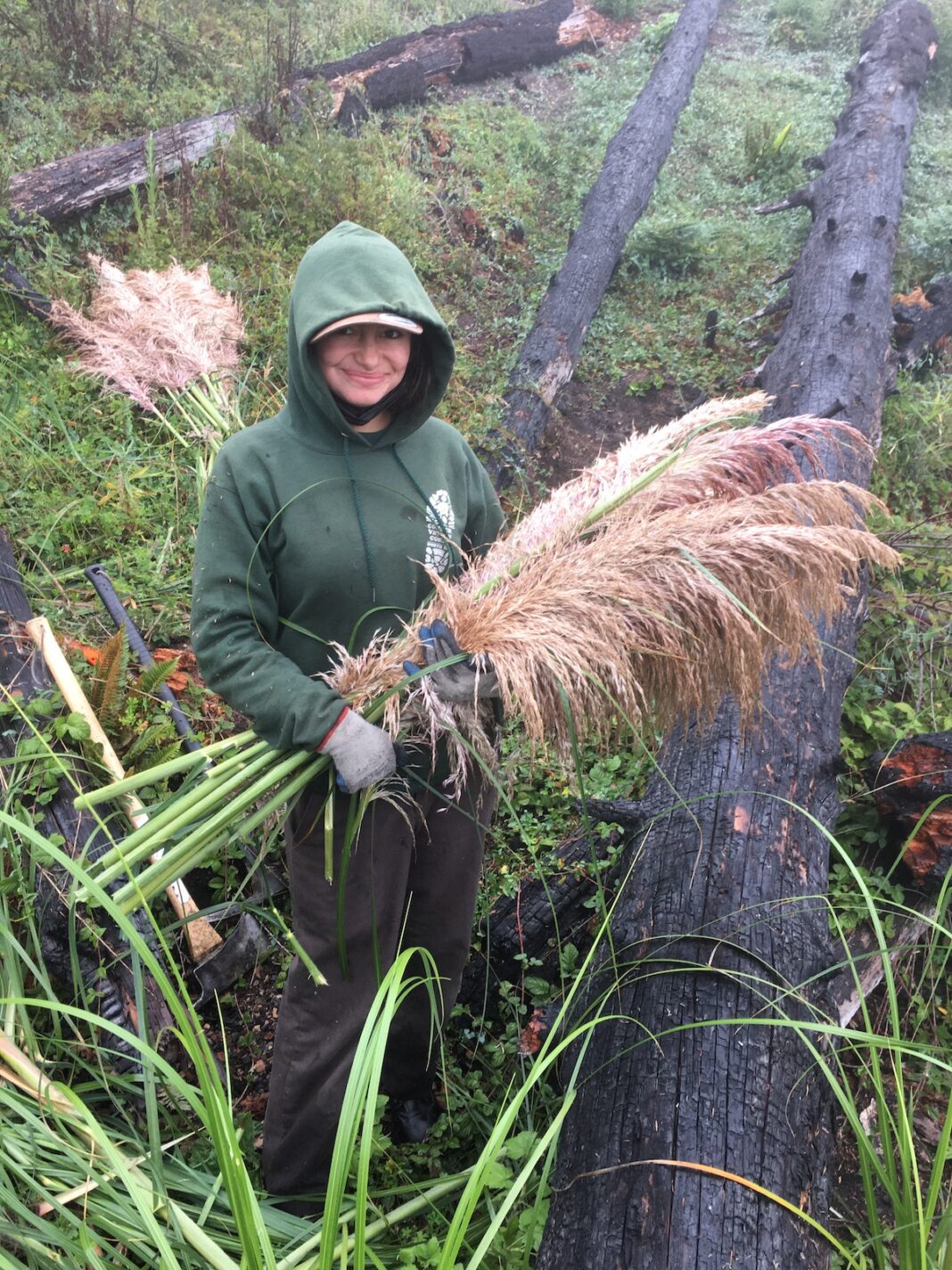The Conservation Corps North Bay is celebrating the 40th anniversary of the organization’s contributions to the environment, community and local youths whose life paths were shaped by their involvement with the organization.
Since 1982, CCNB has empowered thousands of young people through constantly evolving programs designed to meet the needs of the community.
“The majority of our members are young people who have a lot of systemic barriers to achieving financial security,” said Anastasia Pryor, CCNB’s director of development and communications. “We serve a very diverse group of people, ranging from ages 18 to 30. Some haven’t had jobs before, some just came to this country and don’t speak English well, and some came from underprivileged homes. Those who tend to gravitate towards our program usually need some help clearing away those systemic barriers they’re facing. And some folks join us fresh out of college to get work experience and to join adjacent agencies.”
CCNB is the oldest local nonprofit youth Conservation Corps in the country. Last year, North Bay corpsmembers restored 213 acres of natural habitat, diverted 255,000 pounds of bottles and cans from the landfill, reduced fire fuel on 480 acres of public and private land, restored and maintained 109 miles of trails, and diverted 12,600 tires from the landfill.
“Right now we’re pushing 100 corpsmembers, since summer is a very busy time for us, especially with the California fire season and our creek-clearing work [to ensure the waterways flow appropriately when the rains return],” Pryor said.
The idea for CCNB began on a running trail in the Marin Headlands in 1981 when a man named Richard Hammond noticed the trails were in disrepair during his daily run. Hammond saw these unmaintained trails as an opportunity for a summer project for his teenage sons and their friends.
In working together to restore the accessibility of the natural landscape, Hammond hoped to instill in his sons and their friends a sense of personal responsibility for maintaining Marin’s abundant natural resources and to prepare them for possible careers in community service.
The trail-clearing summer project was a success. And, when flooding occurred in 1982, Hammond enlisted the aid of forward-thinking community leaders to come together and create a program designed to engage and empower youth by teaching them to cultivate and preserve the environment. From this movement, the country’s first local nonprofit conservation corps was born.
“It’s … a win-win-win,” Pryor said. “I think the Conservation Corps North Bay helps the corpsmembers, folks that might be the first in their families to learn English or graduate high school, and gives them a hand in getting employment. Helping young people to have a fair start at financial independence and equity is something the whole community benefits from. And we’ve seen the kids of our corpsmembers not having these barriers going forward, and it’s huge for us to know we have that effect. On a community level, the preventative work we do for fires, floods, and, from an environmental standpoint, the change that we make, is crucial.”
CCNB, originally called Marin Conservation Corps, tackled trail repair on Mount Tamalpais as one of its very first projects. Corpsmembers then worked on the nearby Bootjack, Stapleveldt, Fern Canyon, Dipsea and Matt Davis trails in 1982 and 1983.
In recent years, corpsmembers have continued to work on these trails to keep them accessible and safe. In the 40 years since CCNB’s inception, the organization expanded to incorporate educational programs and offer recycling services, partnered with John Muir Charter School to empower young people to earn their high school diplomas, expanded into Sonoma County and also accomplished much, much more.
CCNB is also a part of the Fire Foundry, a collaboration which includes Marin County Fire, College of Marin and the Marin County Office of Equity. The project, which aims to diversify the region’s firefighters, was the brainchild of Marin County Fire Chief Jason Weber.
“The idea is that the folks that enter the fire service are traditionally pretty non-diverse, and there hasn’t been a clear path for more diverse young people to get into that kind of career,” Pryor said. “Weber has been thinking about this for a long time. There’s so much need for trained folks since fire season in California is now a year-round problem.”
Like many businesses and nonprofits, CCNB went through the growing pains of learning to navigate its work and its workers’ safety during the early days of the Covid-19 pandemic.
“We’re proud of how we came out of Covid,” Pryor said. “When everything shut down in March 2020 we really had to work quickly to close our offices and cancel projects since no one knew what was going on in those first several weeks. Right out the gate, however, we had an amazing outpouring of support from our community and donors, which allowed our members to continue and [for] the community to benefit from our services.”
“Fortunately, we were deemed an essential industry pretty fast—our partners needed our services and, with help, we were able to quickly get our corpsmembers going again,” Pryor added. “It was inspiring that everyone got together and solved the problem. We’re really proud of that bounce-back story and are so happy to continue to serve our community and our corpsmembers.”
CCNB now serves both Marin and Sonoma Counties and has even sent its members as far as Fort Bragg and Yosemite to help serve those communities.
Going into its fifth decade of service, CCNB plans to continue providing young adults with opportunities to transform their lives through paid work, education, employment, civic engagement and leadership.
The organization will keep working with the community to conserve and restore natural resources and make improvements to the local landscape. CCNB’s goal of fostering diversity, equity and inclusion, and of helping to create the environmental leaders of the future by mentoring local youth, remains as strong—if not stronger—than it was 40 years ago.
“We’re training the future workforce, giving them tools for the future to give back to the community,” Pryor said.
To learn more about CCNB, visit www.ccnorthbay.org.











